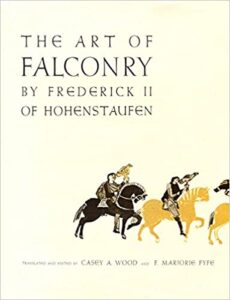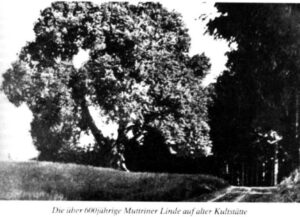Over the last year, my face covered by a mask, clutching a bottle of sanitizer in my pocket, and my eyes obsessively scanning my environment to make sure I observed the required distance of two shopping carts between me and others, I sometimes remembered the amber bear of Slupsk and took comfort in that funny, endearing, snub-nosed little creature with its button eyes.
“A long, long time ago, in a land along the Baltic Sea, a hunter caught a wild bear. After his successful hunt, he carved a tiny bear amulet out of a piece of amber. As long as the hunter carried his little bear with him, he never lost heart or feared anything when encountering trials on his journey. Eventually, the hunter lost his amulet, and his long and fruitful life came to an end. The amber bear vanished forever, but people still believe in its power to this day, calling it the Bear of Happiness.”
Thus goes the legend of the amber bear, told in Pomerania over many centuries. Was there ever such a magical bear?
In 1887, a mysterious amber amulet was found in a peat bog near Slupsk, Poland. Almost four inches long, one inch wide, almost two inches high, it is dark reddish gold and translucent. Its rounded body, shortened stubs for legs, ears, a snout with two holes for the nose, and round eyes, gives it the appearance of a bear cub. Some have claimed that it’s a seal or even a pig, but most now agree that it is a bear. As bears go, this is an odd one. It can’t even stand on its own. You can only see it properly if you hold it in the palm of your hand.
 Amber bear in museum in Szczecin, Poland
Amber bear in museum in Szczecin, Poland
It is likely that the owner carried the amulet on a string, since there are traces where the amber has worn off near the little borehole. Meanwhile, it is unlikely that it was meant as a decorative pendant; if one uses the borehole for the string, the amulet hangs upside down, with the head facing toward the ground.
The age of this little amber bear is in dispute, although it is thought to be at least 3000 years old. Some scholars believe it can be dated back to 8500 to 6,500 before Christ as part of the Maglemose culture. Some think it might be even older; similar amber bears (and other little amber animals like birds and elk) have been found at sites in Jutland, Denmark, dating to the Mesolithic period (12,000-3,900 BC).
For many years, the amber bear was housed in a museum in Stettin (now Szczecin, Poland). Just before the end of World War II, it was sent to a museum in Stralsund for safekeeping. In 2009, in the course of a German-Polish exchange of objects of cultural value, the bear returned to the museum in Szczecin, Poland.
However, Slupsk residents were not reconciled to the loss of their amber bear, and in 1924, members of the amber guild decided to create a copy. This copy occupied pride of place in the Slupsk city museum Nowa Brama, the so-called New Tower, at one time a prison housing people accused of witchcraft. In 1945, the copy was stolen from the museum along with all amber and gold jewelry. Mysteriously, it resurfaced years later in the Museum of Stralsund where the original amber bear was residing. One wonders whether the original amber bear and the copy exchanged notes on their travels.
In recent decades, the town of Slupsk has developed a new tradition to honor their beloved bear. Every year the town auctions a copy of the bear and donates the resulting funds to charity; every year the town commissions an amber master to create a new copy. It is placed into the showcase, where it awaits its turn at auction. Thus, the amber bear continues to bring happiness to the citizens of Stolp.
As an aside, in 1922 the German confectionery company known as Haribo created its first gummy candy in the form of little gummy bears. In the years of following the Great Depression, it was one of the few candies available to children at an affordable price. Remarking on the similarity between the gummy bear and the Slupsk amber bear, some people have claimed that the amber bear served as a model. In fact, Hans Riegel, Sr., the confectioner who founded Haribo, was inspired by trained bears he had seen at street festivities and markets when he came up with the idea of a gelatinous candy bear. Undoubtedly, both the gummy bear and the Slupsk amber bear have become a source of happiness for many.

In these troubled times, it would be lovely to have an amulet that makes us strong and happy. We have to make do with masks. But the existence of the amber bear inspires hope. Sometimes we lose sight of courage, resilience, and kindness, but they are still there in our hearts.
Gummy bears image: Photo by Jebulon – Own work, CC0, https://commons.wikimedia.org/w/index.php?curid=27753729
Amber bear: The amber bear of Slupsk is 10.2 cm long, 3.5 cm wide and 4.2 cm high. The body is compact and massive and weighs 85 grams. source: www.slupczewski.pl, Michał Słupczewski” (on websites link should be active)Polski: fotografie należy podpisać w następujący sposób: “źródło: www.slupczewski.pl, Michał Słupczewski” (na stronach www wraz z aktywnym linkiem), Attribution, https://commons.wikimedia.org/w/index.php?curid=11431914







